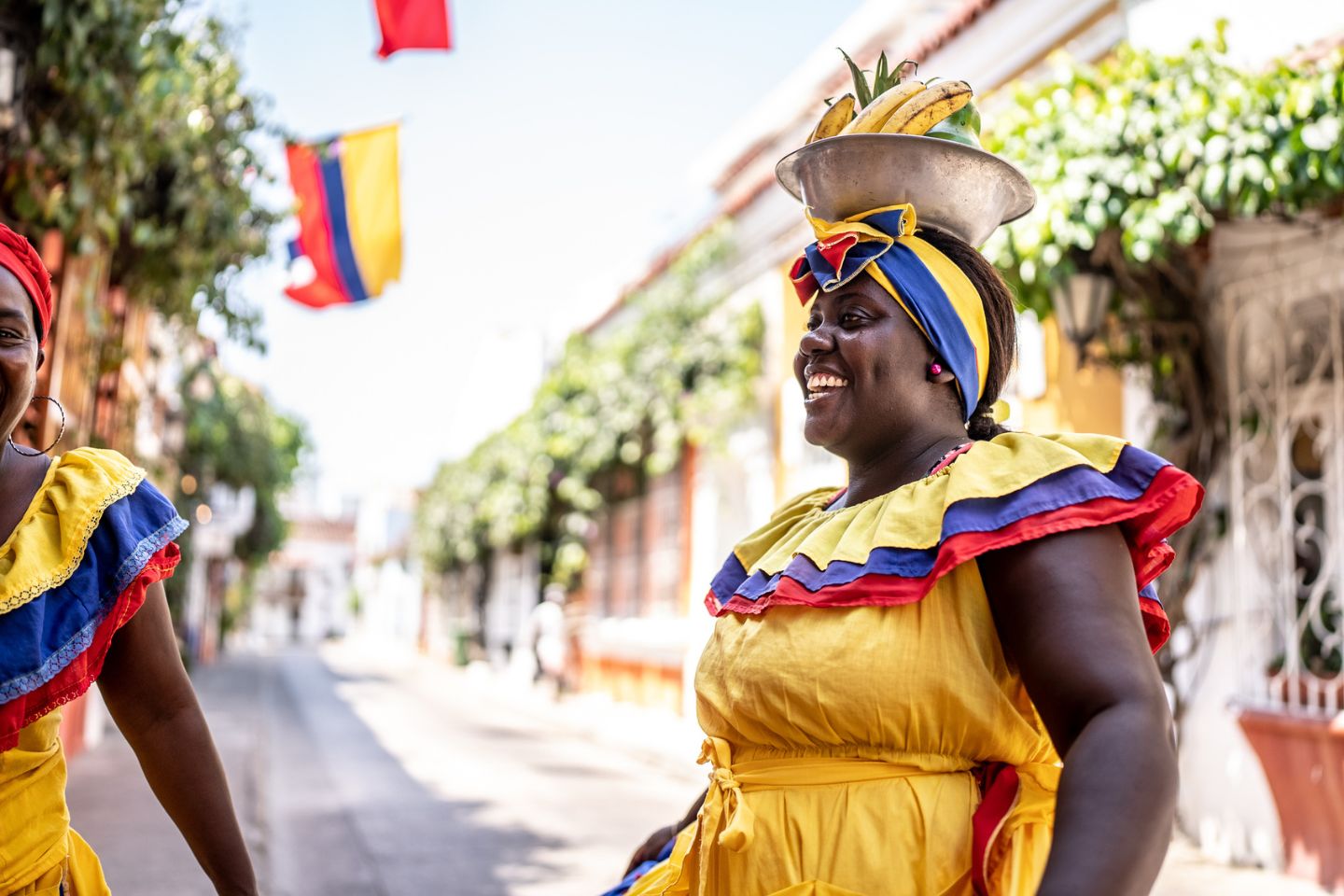If you’re looking for a South American country that is rich in Black history, Colombia is a great choice. While Afro-Colombians are impacted by racism, colorism, and classism, they press on in spite of it all.
Black travelers from other countries are drawn to the food, music, and generally pleasant vibes of Colombia. Some Black-owned-tour groups host excursions there, while travel influencers post pictures of the murals, statues, and other symbols linked to our history. There’s even a segment of Black expats who call Colombia home.
Here are just a few sites worth visiting if you’re interested in Black Colombian history.
San Basilio de Palenque
Often called Palenque for short, this was the first free town in the Americas. It’s part of the Mahates district, and many of the locals are proudly of African descent.
As you move through this special place, you’ll encounter the palenqueras. These women are known for their colorful attire, and for selling scores of delicious goods like coconut cake, sugared papaya, and much more. They speak Palenque, one of Colombia’s 69 native languages. Some travel to Cartagena, which is about an hour away to sell their goods.
Aside from the food, the African influence is evident in the love of music and dancing. To experience this fully, visit Palenque in October, when the Drums and Cultural Expressions Festival is held.
Cartagena
If you want to learn about Black history in and around Cartagena, Black-owned tour companies like Experience Real Cartagena can guide you.
They offer nine tours geared towards different interests. Of note is the Graffiti Tour, where you’ll see some incredible murals featuring Black and indigenous figures. If you’re interested in trying some delicious, African-inspired food, book The Real Cartagena Tour.
Santiago de Cali and Medellín
Cali, located on Colombia’s Pacific Coast, has the second-highest Black population in Latin America. It’s home to the Petronio Alvaréz Festival, which celebrates Afro-Colombian heritage. This electric event has been a Cali staple for more than 20 years, and it goes on for six days.
If you’re in Medellín, be sure to try the delicious cuisine. There’s also the Festival of Flowers, which has roots in the Black experience. It lasts 10 days in early August.





